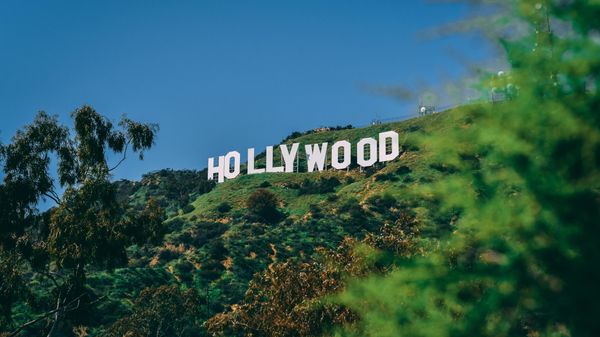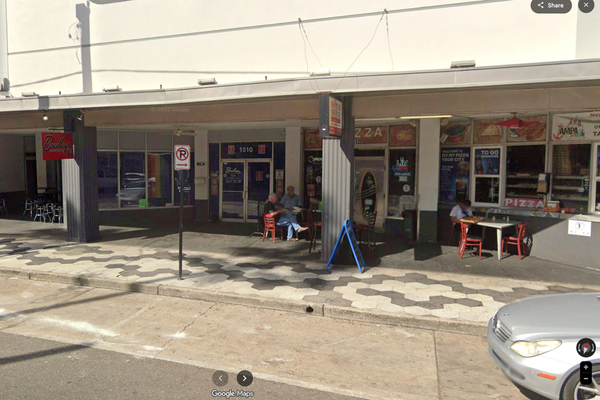Ten years ago, Hydro Tasmania environmental scientist Carolyn Maxwell stood on the bank of a lagoon in Tasmania's central highlands looking over an expanse of mud, hoping a plan to rehabilitate an unusual wetland would work.
The view from that bank is very different today — reeds abound in the lagoon, tiny purple "fairies aprons" grow in the moist soil at the edges, and other native vegetation has returned. A heron wades in the shallow water, and the sounds of frogs and insects fill the air.
Lagoon of Islands, almost 40 kilometres north of Bothwell, was dammed in 1964 by the then-Hydro Electric Commission, not for electricity generation, but to provide water to irrigators along the Ouse River after water was diverted from the Waddamana Power Station into the new Poatina scheme.
"Before Lagoon of Islands was dammed it was a unique eco-system," Dr Maxwell said.
"The floor of the wetland was what's called a schwingmoor, [which] is a system where the roots of the reeds out there interlace with each other and form a solid mat that will support the weight of a human, or a couple of humans, walking across it, but it actually floats on top of the water.
"It is anchored into the sediments around the perimeter of the lagoon."
There are not many schwingmoor systems in the world, and this one supported endemic Tasmanian species.
The damming of the lagoon raised the water level, killing the "islands" and creating water quality problems, especially in the 1990s and 2000s.
In 2012, the lagoon was drained and in 2013 the dam wall was removed. It was the start of the rehabilitation.
"I remember standing on the foreshore looking at the mud going, 'Okay, point of no return, this thing better work'. Thinking back to that, it's really satisfying to see what's happened here," Dr Maxwell said.
A natural capacity to restore
Dr Maxwell did her PhD on the lagoon. It was on her first field trip that her supervisor, now-retired limnologist Professor Peter Tyler, noticed a couple of clumps of a reed called baumea surviving despite the degradation of the lagoon.
"That suggested to us that there was some natural capacity to restore, to regenerate," Dr Maxwell said.
Hydro's environment team has focused on getting the water conditions right to encourage the return of species. The only place where there was any seeding work, or active intervention, was where the dam wall had been.
"When you look out there now, it largely looks similar to what was there before it was dammed. We know it's different, we know that we don't yet have mature eucalypt trees or tea trees on floating islands out there like the old system used to have, but we know we've got a whole lot of the species out there, so things like the rushes and some of the sedges, we know that they've come back," Dr Maxwell said.
The restoration goal, to restore a healthy wetland, was reached a few years ago.
Dr Tyler, who now lives in Victoria, gets updates from Dr Maxwell on progress at Lagoon of Islands.
"I never thought I'd live to see it [being restored], I fee absolutely elated," the 87-year-old said.
Dr Maxwell said she was hopeful there would be mature trees growing on "islands" in the lagoon again, but said only time would tell if the conditions were right.
'Something special'
Dr Maxwell has moved into a different role at Hydro Tasmania and in 2019 passed the oversight of the Lagoon of Islands project to fellow environmental scientist Rebecca Sheldon.
"I have a background in wetland ecology and this is one of my favourite sites in the state," Ms Sheldon said.
"They're just wonderfully dynamic systems that really do amazing things for themselves if you let them."
Dr Tyler said it was his PhD supervisor at the University of Tasmania, botanist Professor Bill Jackson (who died in 2002) who recognised Lagoon of Islands was "something special". At that time, the uniqueness of the lagoon was not known.
"But I can say it now: there was no other lake in the world which either had islands floating on a reed mat, and certainly not anything like it in the way in which that happened ... and how they formed," Dr Tyler said.
Lagoon overshadowed by Lake Pedder decision
Dr Tyler was against the damming of the lagoon in the 1960s, but he said it was "overshadowed" by another Hydro Electric Commission project.
"It was contemporaneous with the announcement that Lake Pedder would be 'somewhat modified', as they put it so disgracefully," he said.
Lake Pedder — and its inland pink quartzite beach — in Tasmania's south-west, was flooded in 1972.
Restore Lake Pedder convenor Christine Milne said the success at Lagoon of Islands was "inspiring".
"The Hydro, having demonstrated that they can restore an ecosystem with the Lagoon of Islands have demonstrated they could do it with Lake Pedder. The issue is merely political will," Ms Milne said.
Lake Pedder would be a much larger scale restoration. It is 242 square kilometres — compared with 9 square kilometres at Lagoon of Islands — and includes three large dams.
A Hydro Tasmania spokesman said Lake Pedder, combined with Lake Gordon was the "largest storage of water in Australia and contributes approximately 13 per cent of Tasmania's total power generation".
"As Australia transitions to renewable energy, long-duration energy storage, like that provided by Lake Pedder, is essential to fill the gaps when wind and solar power aren't available. Even with more wind being built in Tasmania, this storage is still needed to provide a back up service to complement wind."
This year, Hydro will start a $21 million strengthening project on the Edgar Dam, which is one of the dams edging Lake Pedder. Scotts Peak Dam is also expected to be strengthened, although that work is still being determined.
The spokesman said draining Lake Pedder was a matter for the government. Energy Minister Guy Barnett has said it would be an "economic" and "environmental tragedy".
Dr Tyler said restoration of Lake Pedder was "a noble ambition", but would be a "massive project".
"With the present energy crisis, it's not going to happen tomorrow," he said.







